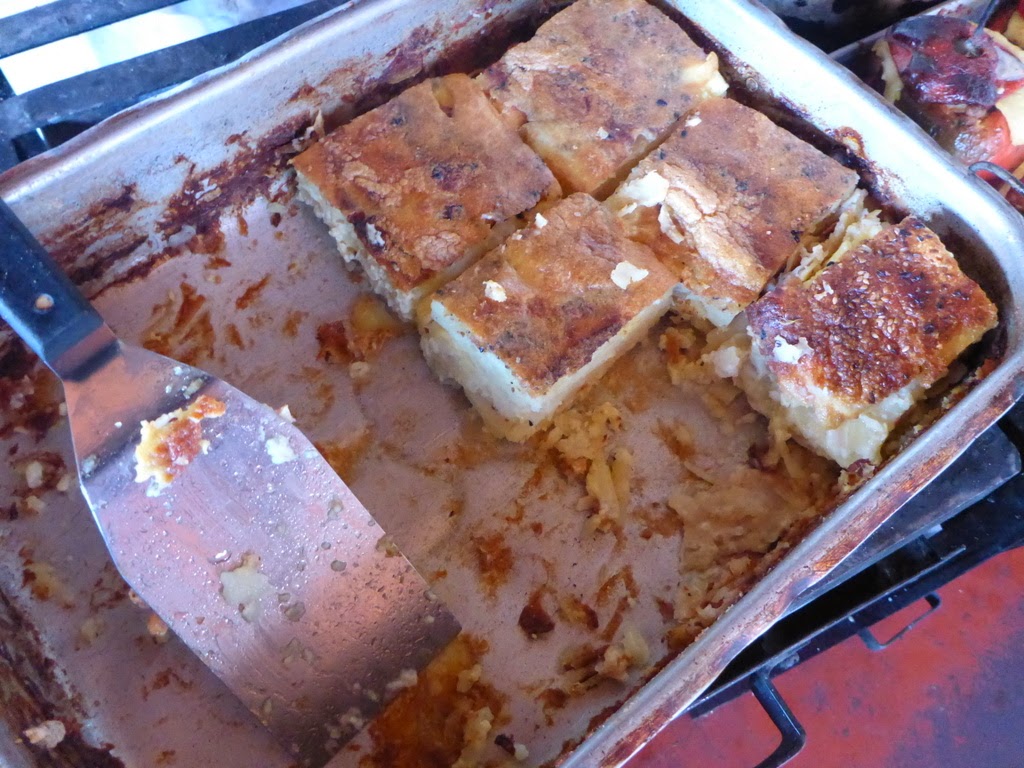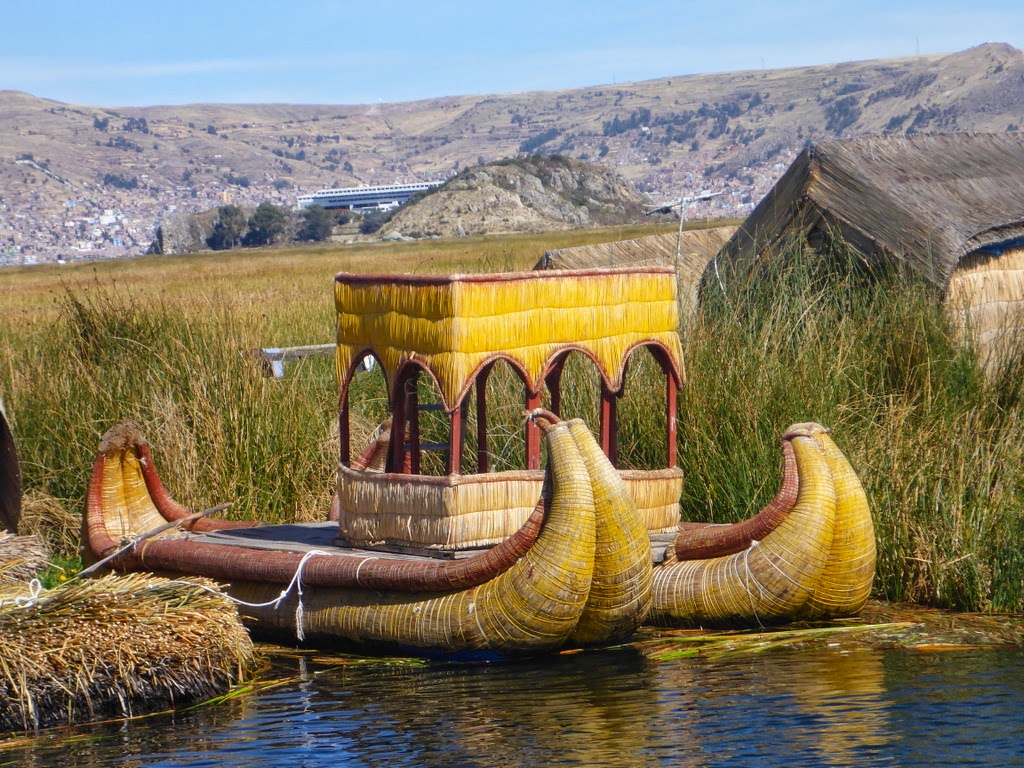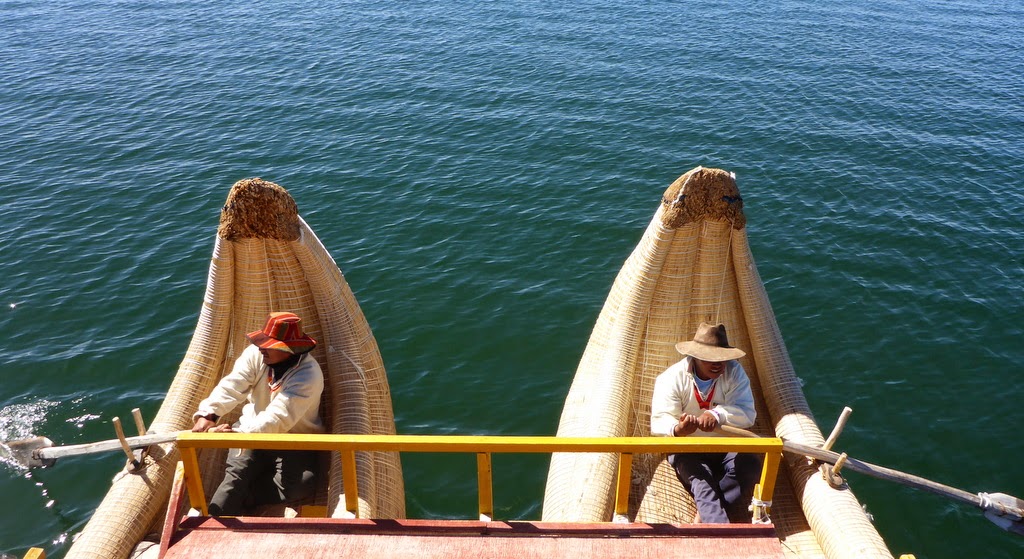The drive was beautiful, filled with sculpted cliffs and little oasis towns. All along the way there were these little woven reed mat structures out in the middle of nowhere. They often appeared empty, though sometimes there were little trees planted out front or low rocks placed as a border. It turns out that these are invasión de terrenos--like squatting--where people build on other people's land. Often the landowner is far away, or they don't have the money and/or clout to get the police to stop a little town from cropping up on their land. I guess the people start off with reed houses and then if no one kicks them off the land, they grow into the adobe and recycled slums that you can find in other parts.
We were comforted by this sign.
I found that the animitas in Perú were more religious, and less flashy than in Chile. As we got closer to Arequipa, there were cemeteries and less and less animitas.
We arrived in Arequipa at noon (by our clocks) and quickly tried to find the place where we were to meet with our friends who were at a retreat until 2pm. We had a point on our GPS and navigating through the INSANE Peruvian traffic, we found the point but discovered it was in the middle of this river canyon and we were on the wrong side. We didn't have a real address, only a GPS point, and my vague recollections that the building was pink and was some sort of monastery or something. We tried to find a place with internet to get the address, but it turns out that the sector of the city we were in were having electricity blackouts and therefore no internet. We just drove around and around trying to find this place and at 2pm, I decided it was best to give up and just head to the center of town to find some lunch and internet and we could message our friends and let them know where we were.
We went to this great restaurant and had regional food, including the local Chicha Morada (which is a drink made of purple corn). It was super delicious and we gobbled it all up (even the tripe, or cow stomach) happily.
Now that we were fed, it was time for internet. I'm gagging as I say this, but, "Thank goodness for Starbucks." They have "free" wifi and comfy places to sit and bathrooms. We contacted our friends in town and also contacted our family and friends in the US. We also found out how much a Nueva Sol was worth and that the time changed when we crossed the border, so it was now one hour earlier. This cleared up a lot of confusion.
We found our friends in the Plaza de Armas and it was great to get together with such a friendly and lively bunch of Peruvians. We met some folks from Lima who invited us to their home and also some Colombians who gave us their info if we ran into any trouble there. We found out that we had literally given up our search for them at the retreat place at the front gate of the the retreat, and furthermore we were in time for the final goodbyes because of the time change. Oh well. We were given all sorts of gifts like t-shirts and necklaces and buttons from the retreat, we can pretend we were at the event ourselves! Thank you!
My goal during this journey is to try to go to a recovery group in each country we travel to. This proved difficult in Argentina, especially with sporadic internet to check meeting times. I decided that since I had access to internet in Arequipa, and since we really had no idea about our schedule in Perú, I was going to hit a meeting ASAP. I found that there was one close to the Plaza de Armas that afternoon and made plans to meet up with everyone at 7 for dinner. The meeting took place in a weird dark alley up a flight of unlit steps onto an open-air terrace. It was packed! Wahoo!! They asked me to share and I was surprised to find myself sobbing. Everyone started clapping and shouting, "Fuerza!" and the women hugged and kissed me. It was amazing. I guess I just had a lot of bottled up feelings inside and being in a "room" with a bunch of others who share my same struggles and victories---it was overwhelming and I was given so much love that my heart was filled up. Thank you Perú!
While I was at the meeting Ben and the kids went on an adventure exploring the city and it's beautiful churches. They also found us a place to "camp" at a guarded parking lot with a bathroom!
We met up again with our friends for dinner and said our goodbyes as everyone headed out to catch their buses and flights back home after their retreat.
We were all pretty tired after waking up so early, so we headed back to our little parking lot--called "Playa" or beach in Perú--to go to sleep. We hadn't noticed all the disco clubs around the parking lot earlier in the afternoon, but they blasted music all night! We were so tired we didn't even care, it was kinda fun to hear all the craziness echoing off the city walls that surrounded us.
The next morning we had a few errands to run--namely we needed the oil changed in the car, some tourist maps and information to get and download, and I really wanted a waterproof watch that had a light up screen and alarm. We split up and decided that we would make the Starbucks our central base and meet-up point in a few hours. All worked out well and we hit the road in the early afternoon and made our way towards Lake Titicaca.
I can't decide if I'm offended by this. The flavor I got was rum raisin--delicious!
Pope John Paul visited here.
We found a mirador--or lookout--over an alpine lake to camp at and went to bed. I woke up in the night with a headache and some queeziness and shrugged it off and fell back asleep. But by morning I realized that I was sick. Bad. I had an incredible headache and started vomiting pretty violently. It was awful. The folks at the mirador pointed out that we were camped at over 14,000 feet and that I was probably suffering from soroche, or altitude sickness! No wonder!! They suggested heading downhill to Juliaca to buy some coca tea--which is a mild tea made of natural coca leaves and is nothing like taking cocaine which is something I would never do--which will help.
We drove down the winding highway to Juliaca, which is a bustling little town filled with ladies in traditional Peruvian dress selling their wares, and Ben found me some coca leaves and made me a tea. I was pretty weak and all liquids I'd tried to take were not staying down, so I sipped super slowly my tea, which tastes like leaves, and it stayed down! Hooray!! I had a couple of cups and we left Juliaca to go to the nearby ruins of Sillustani where your entrance fee also covers camping.
Sick Cana and a Shrine!
Dried Coca leaves
Driving in Juliaca was INSANE.
We ran over a serious pothole and Ben wanted to check the spare tire.
It was 9am when we pulled into the ruins and set up camp. I was too weak to do anything but rest, but we made plans to climb up to the ruins at sunset. They were beautiful--and you could climb inside these little doors to these pitch black little rooms. Of course we didn't bring a flashlight, but we went inside anyways. I was glad to be feeling better.
Your entrance fee includes camping, but bathrooms are 1 sol each go.
All carved by hand, amazing.
Here we are making fun of other blogs we've seen where they do yoga all over the place.
We camped and woke up early to get to Puno where we could take a tour boat to the Uros reed islands at 9 am.
Arriving at the dock in Puno, we were to find a guide easily and happily climbed aboard our little boat with about 10 other tourists. Our guide was great. He was funny and gave good explanations and advice about the islands. First thing is that Lake Titicaca isn't pronounced Titti-ca-ca, but Titti-ha-ha. Just so you know.
There are these little clusters of houses outside of Sillustani. The houses have bull figurines on top of them.
When you enter the islands the guide pays a fee at the entrance and there I saw an islander guy wearing an Alaska hat! Cool! There are about 80 little family islands and one capital island where the school and store is. Our tour went to one family island, where people live, and to the capital.
"Kamisaraki" means "How are you?" in the Quechua language. You would answer, "Waliki!" meaning, "Great!"
The guide said that the islands are visited by rotation and are visited about once a week. Our island was filled with one large extended family and was, quite literally, all made of reeds. It was cool to walk on and smelled like hay.
The guide split up our group into little groups where we could visit a family's home and even try on their clothes. It felt a little weird trying on this lady's clothes, and I noticed the other tourist ladies declined in their houses, but I'm glad we did. Our "mamacita" (little Mama) was proud to dress us up and her husband went and got a special knitted "unmarried" ladies hat for Dylan from a neighbor.
We also were shown her stitch work. This is their main source of income, and takes about a month or two to finish a panel by hand. Of course I bought some, they were colorful and pretty and easy to take with us. She gave Dylan a necklace and Wells a small ocarina whistle as a gift--Wells loves to play that thing!
Next we went on a 30 minute ride on the "Mercedes Benz," which is a large two story gondola boat made of plastic bottles and covered with reeds. Before we left their island, all the mamacitas sang us songs, which all ended in "whoo!" I spent our boat ride chatting with a young Mexican lady about tourism and cultural preservation. I have strong opinions about this, coming from a region who had tourism when I was young--and though my sisters and I learned our traditional dances to perform for tourists, the point was that we knew the traditional dances and who cares why? We don't have tourism in our region of Alaska anymore, and I wonder if the young generation know the dances like my generation does? Anyhoo. Heady stuff, and all in Spanish BTW.
We then went to the capital, which was a stop all the tourist boats make. It was packed, so we just found a comfy place to sit and watch. I bought some fry bread and walked around barefooted. I liked our little island better.
Lake Titicaca--It was super touristy, but I loved it all. I have wanted to see Lake Titicaca forever and I was not disappointed!!
Saying goodbye to Puno, we headed towards Cusco. Machu Picchu was our next order of business.
Along the highway, all over Perú, there are political propaganda signs painted on everything--walls, cliffs and houses. My favorite was the one that had an Inca warrior hand painted, so each warrior had a different expression, depending on how it was painted.
At a high mountain pass, Ben found his place! It's kinda fun to see my name written all over the place. It strokes my ego. But then I remember that there's Caña (sugar cane), Cana (grey hair), and Cana (prison), and my ego deflates sufficiently. All I ever wanted when I was a kid was one of those stupid name license plates...but they never seemed to have a Cana one. Woe is me.
We camped outside of town at a small pueblo/ruins called Tipón in a small little nook at a hairpin curve up to the ruins (which were locked up--whew, turning around outside the gate was coo-coo-balls) and made our way to Cusco in the morning where there exists a great camping place for overlanders up in the hills above town.
Along the highway, all over Perú, there are political propaganda signs painted on everything--walls, cliffs and houses. My favorite was the one that had an Inca warrior hand painted, so each warrior had a different expression, depending on how it was painted.
At a high mountain pass, Ben found his place! It's kinda fun to see my name written all over the place. It strokes my ego. But then I remember that there's Caña (sugar cane), Cana (grey hair), and Cana (prison), and my ego deflates sufficiently. All I ever wanted when I was a kid was one of those stupid name license plates...but they never seemed to have a Cana one. Woe is me.
We camped outside of town at a small pueblo/ruins called Tipón in a small little nook at a hairpin curve up to the ruins (which were locked up--whew, turning around outside the gate was coo-coo-balls) and made our way to Cusco in the morning where there exists a great camping place for overlanders up in the hills above town.



































































































